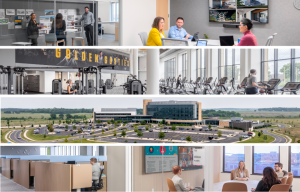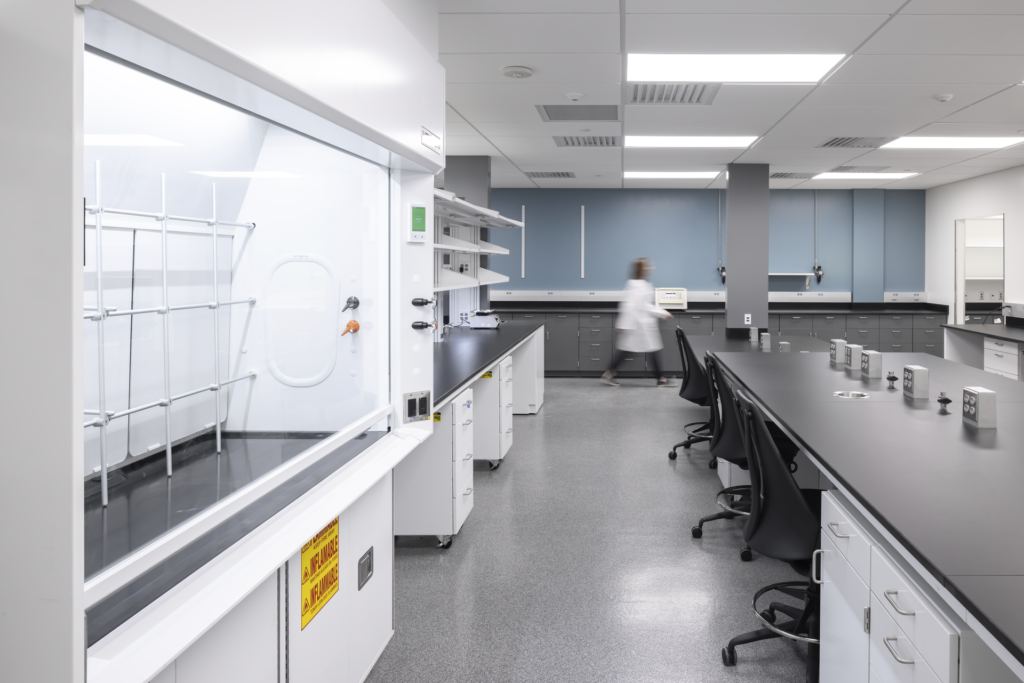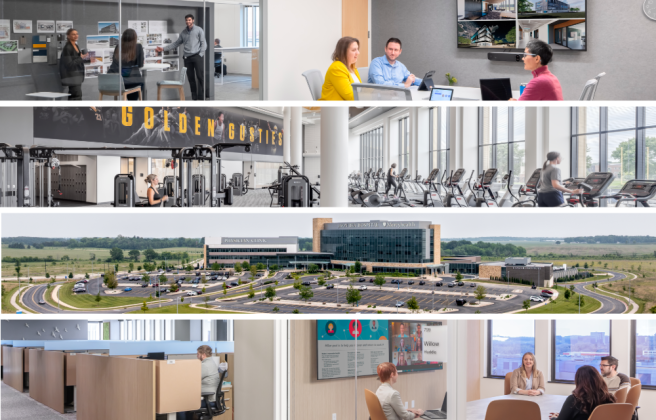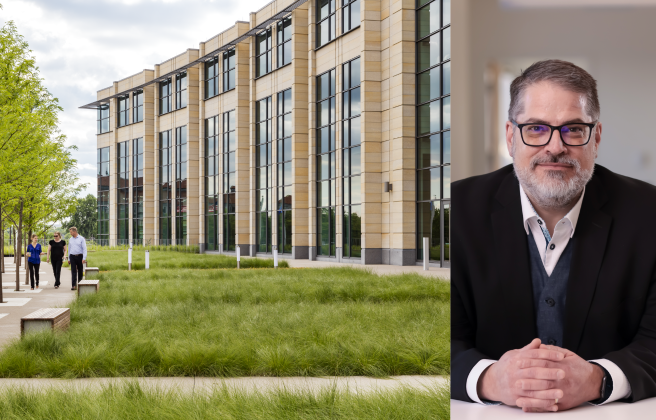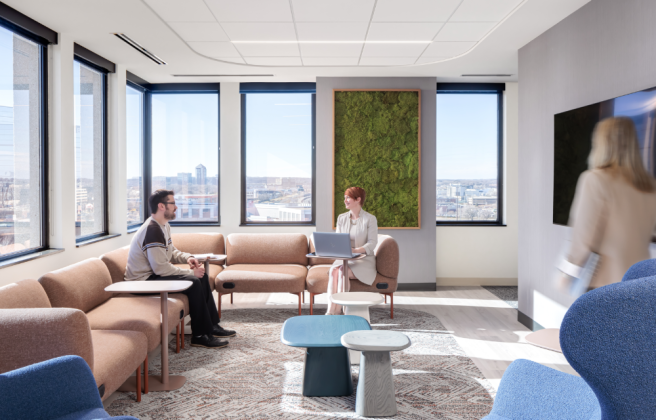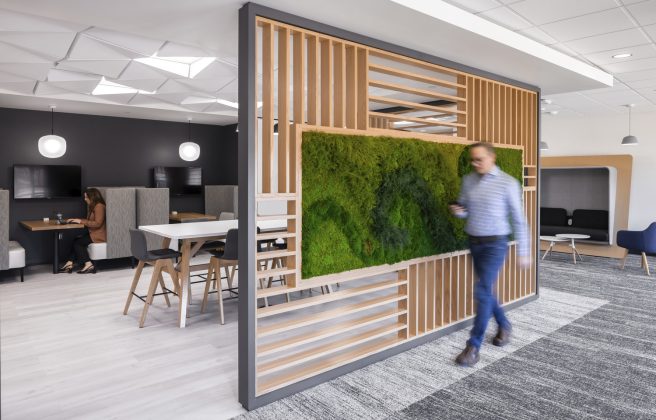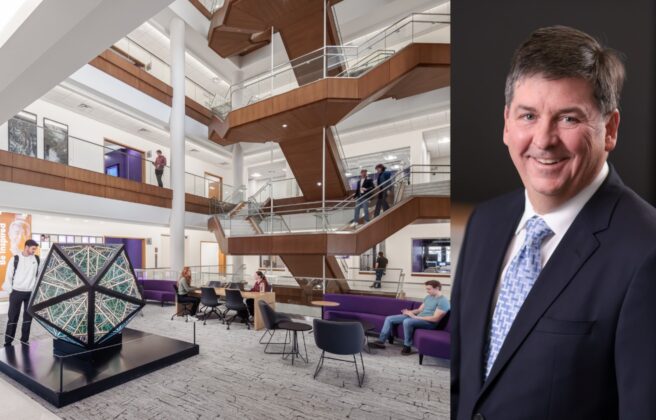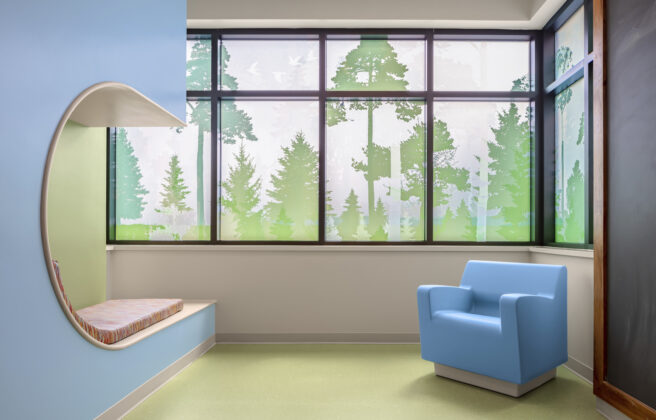Though scientific labs serve diverse purposes, from experimentation to manufacturing products using highly technical equipment, designing any environment where cutting-edge research and development takes place requires a deep understanding of function, safety, and compliance, in addition to aesthetics.
Between managing specialized instrumentation, hazardous materials, and complex regulations, working with a team that specializes in science and technology projects streamlines the process of creating labs that are not only safe and durable, but also as innovative and efficient as the teams using them.
The Role of Lab Planners
Lab planners play a pivotal role from the early stages of programming and planning laboratory spaces, collaborating with lab staff, researchers, lab managers, and other stakeholders to create labs that meet functional requirements, comply with regulations, and optimize workflow efficiency. This also includes strategically organizing work areas, equipment placement, and circulation paths to minimize disruptions and streamline operations. From initial space layouts to the detailed coordination of Construction Documents and code compliance, lab planners oversee every aspect of the design process.
Navigating Codes and Regulations
These environments are heavily regulated with high operational standards, so balancing efficiency and aesthetics within strict confines takes the specialized knowledge of lab planners. Understanding of applicable codes and regulations is essential.
True for all labs is that safety and compliance is the top priority, which involves an understanding of a facility’s chemical use and the associated hazard level. FDA or EU-regulated facilities need to comply with a variety of strict protocols governing the production of pharmaceutical products, while facilities accredited for food, agriculture, biosafety, healthcare, semiconductor, and educational functions must meet specific requirements of their own in order to function.
BWBR’s planners execute a compliance strategy throughout the project, from big-picture decisions regarding adjacencies and workflows to granular discussions about waste treatment, utility terminations, and gowning. Thoughtfully planned safety systems that go beyond the guidelines create environments that not only meet regulations but optimize efficiency while decreasing potential hazards.
Managing Hazardous Materials
Nearly every laboratory environment utilizes hazardous materials, but building code requirements (and therefore the lab planner’s design response) are based on the material’s classification. The more hazardous a material, the more crucial design strategy becomes in creating a safe environment for storage and handling.
Planners work closely with stakeholders to understand the quantity of materials, how they are used, and where chemical control areas need to be located in relation to workspaces, which all determines how to optimize workflow. The International Building Code (IBC) regulates maximum quantities of hazardous materials, whether storage must be open or closed, and how many control areas can be located on each floor of a facility.
With a deep understanding of these codes, lab planners can create spaces that not only keep dangerous materials safe but also place them right where they’re needed. This means research and discovery can happen more efficiently, without compromising on safety.
Crafting Resilient Environments
Interior finishes in labs must meet durability, cleanliness, and safety demands in order to keep research and production running efficiently. Regulations also play a large part in determining appropriate materials in a laboratory, such as using liquid-tight epoxy flooring in spaces where liquids are utilized or walls with vapor barriers in humid cleanroom environments.
While requirements for finishes vary depending on the purpose and grade of each laboratory, it’s important that materials selected are suited for the type of production that takes place. This also includes facilitating heavy and frequent cleaning, limiting dust collection, and providing resistance against damage and spills. And although interior finishes must function well in a scientific environment, it doesn’t mean these environments have to yield on aesthetics. Our team knows that engaging, inspiring design is an essential part of performance in laboratories and are skilled at planning spaces that prioritize both comfort and compliance.
High-quality interior finishes selected by planners who understand how people and materials will flow into and out of a space help create laboratories that stand the test of time, maximizing sterility, integrity, and innovation for years to come.
Safety in Action
Scientific environments require an intricate balance of function, safety, and inspiring design for innovation to thrive. Lab planners, with their specialized knowledge, navigate the complexities of creating spaces that not only comply with all relevant regulations and standards but also foster efficiency. Through strategic design and deep understanding of what laboratories need to maximize results, they design labs that not only meet today’s demands, but are also prepared for the innovations of tomorrow.

